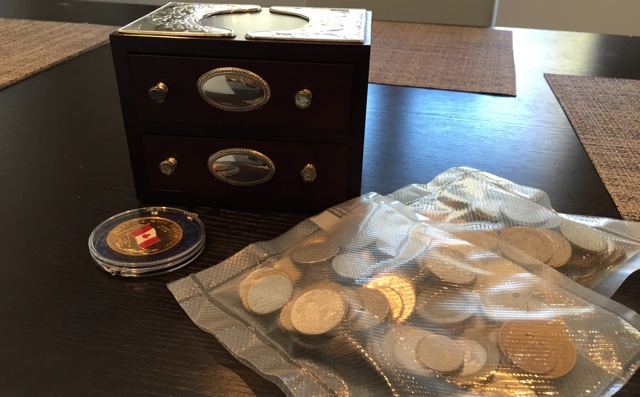 Every weekend I buy a few items on VarageSale. It’s not because I need more tchotchkes (although I am buying some awesome things for our new office), it’s because I need to use the product to really understand our members. We collect a ton of quantitative data, but you can’t win on quantitative data alone–you have to find a way to collect qualitative data as well. There are lots of ways to collect qualitative information, but one of the best ways is to use your own product.
Every weekend I buy a few items on VarageSale. It’s not because I need more tchotchkes (although I am buying some awesome things for our new office), it’s because I need to use the product to really understand our members. We collect a ton of quantitative data, but you can’t win on quantitative data alone–you have to find a way to collect qualitative data as well. There are lots of ways to collect qualitative information, but one of the best ways is to use your own product.
Using your own product is not always possible. You may not be the target market. If you’re building a marketplace you might find it particularly challenging to use your product on a regular basis. How often can you buy or sell the products or services available? And even if you have a use case as a buyer or seller, you’re dependent on the other side of the marketplace to really use the product–you can’t use it a ton in isolation. This makes using your marketplace a challenge but even more important because you need to satisfy two different user segments (although some buyers may be sellers and vice versa) at the same time.
The best part of using VarageSale is that I get to meet members face-to-face. I’m able to do user research each and every time I complete a transaction. People are more than willing to chat about what they like and don’t like. I learn a lot. The information I collect is anecdotal (because I can only do a few transactions per week) but I see patterns emerging very quickly and can extrapolate from there.
Using your own product is a great way of combating the curse of knowledge. This is especially true for marketplaces (but could be true for any collaborative or social product) because you rely on others to get value from the product. I know VarageSale very well but it’s not as if I can skip steps or use power features to get to a transaction faster–I still have to wait for a seller to respond, I still have to go back and forth to negotiate a time and place to meet, etc. I very quickly get to “live” all the good stuff in VarageSale, but also all the nitty gritty issues. Our members’ frustrations become my frustrations. And even if I know there are ways around those frustrations (i.e. shortcuts, etc.) it becomes very clear that members don’t always know them. Battling the curse of knowledge is critical–you have to look at your product with “fresh eyes” as often as you can–using it regularly is a great way of doing that.
If you’re building a marketplace, find a way to use the product on both sides. Buy and sell. Think of it like being a “mystery shopper” where you can go into your own product (for marketplaces the product is more than the features, it’s the members that make the product!) and use it like everyone else. If you can’t play on both sides of your marketplace then I would consider hiring people to do so while you watch over their shoulder. Take Crew for an example, a marketplace for working with designers and developers. The folks at Crew can work on the demand side pretty easily, but it’s harder for them to play on the supply side. Instead they could hire designers and developers to work on the supply side for them; they could sit down with a couple designers and watch them go through the whole experience from start to finish. They could be almost completely hands-on on the supply side to really live that experience. (Note: I’m using Crew as an example b/c I was speaking with the founder recently, I don’t know if they do this or not.)
Yesterday I bought three things on VarageSale (you can see them pictured above). I met three members and engaged them each in meaningful conversations about their experience with the product. The feedback goes way beyond product features, it goes into the whole experience of using VarageSale. That’s a good reminder: products aren’t islands. People are doing something before they use your product and after. Those behaviors, triggers and moments matter a lot. If you understand everything that surrounds your product’s use, you’ll understand your product and users much more.
My next challenge is selling stuff on VarageSale. I did post a set of How To Train Your Dragon books but no one has expressed interest–truth is, that alone is pretty telling. Imagine a first time seller coming to your marketplace and getting no feedback/interest whatsoever. Do they come back or churn? Hhhmmm…Maybe you can dig into the data and get an empirical answer, but you should also try it yourself and see how it feels.
 Founding Partner at
Founding Partner at 